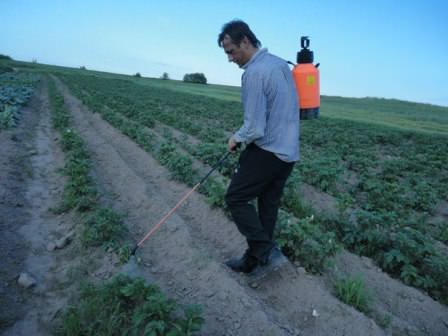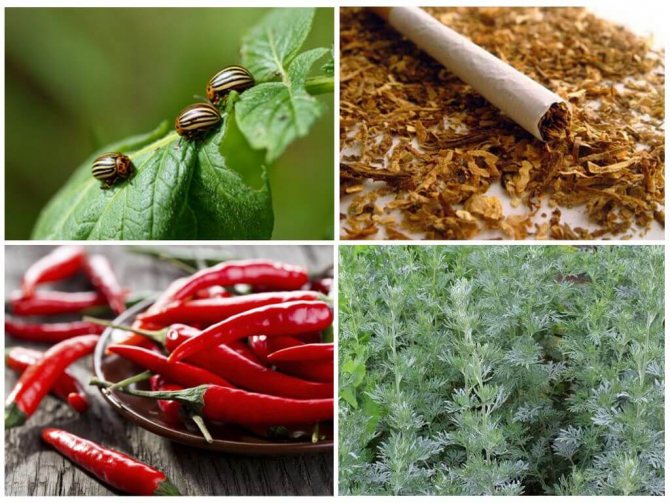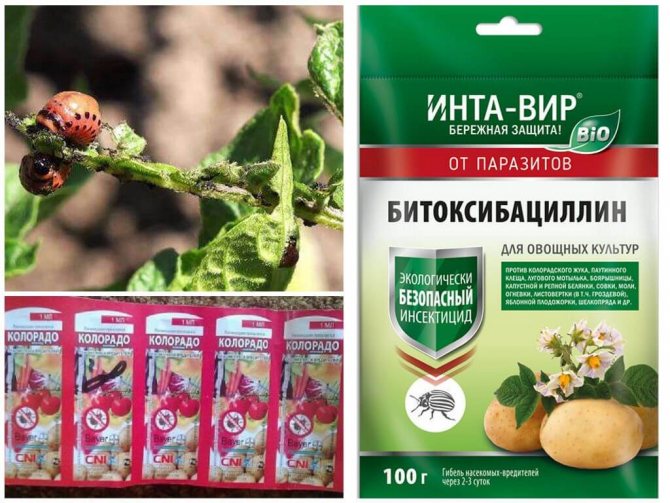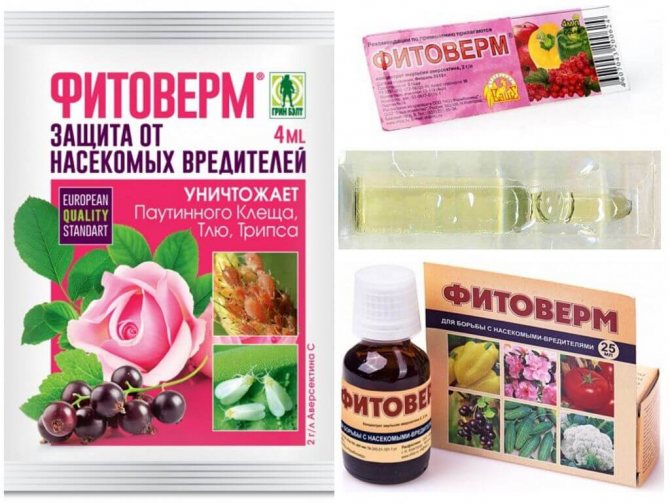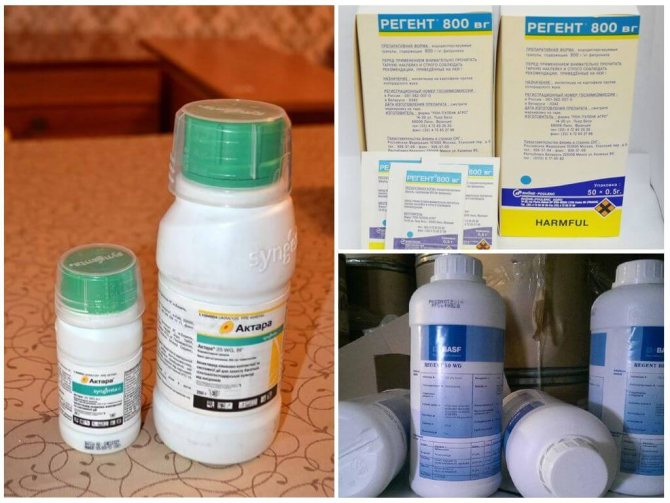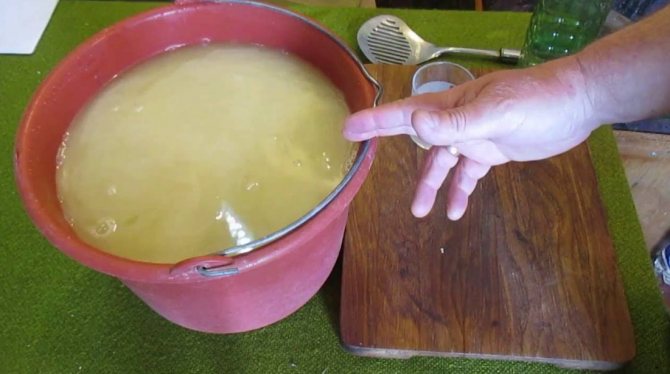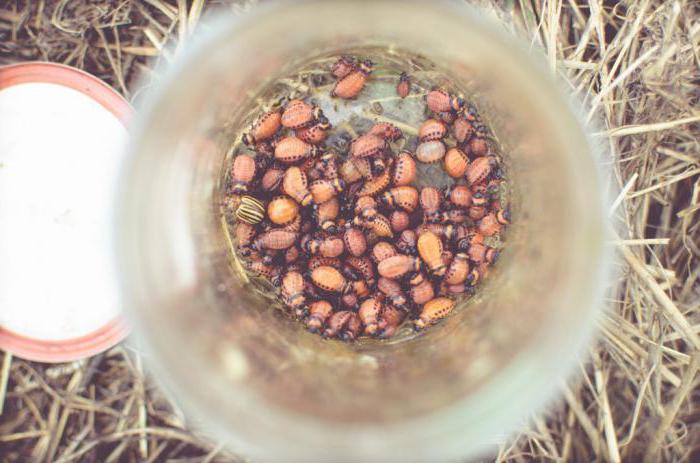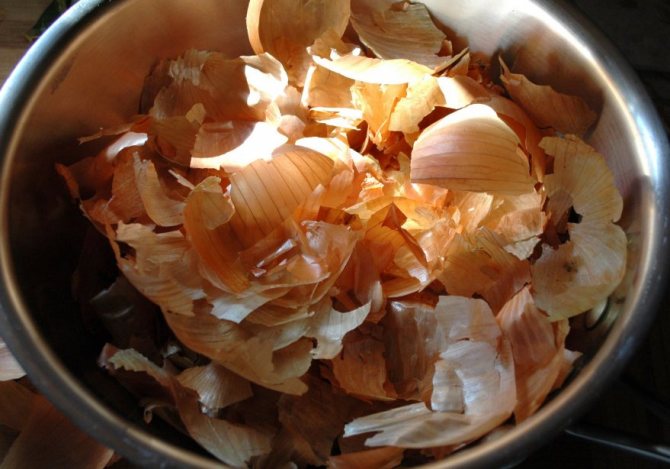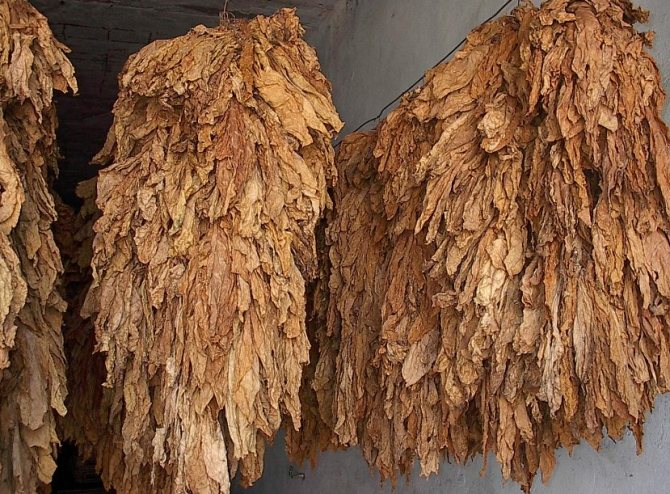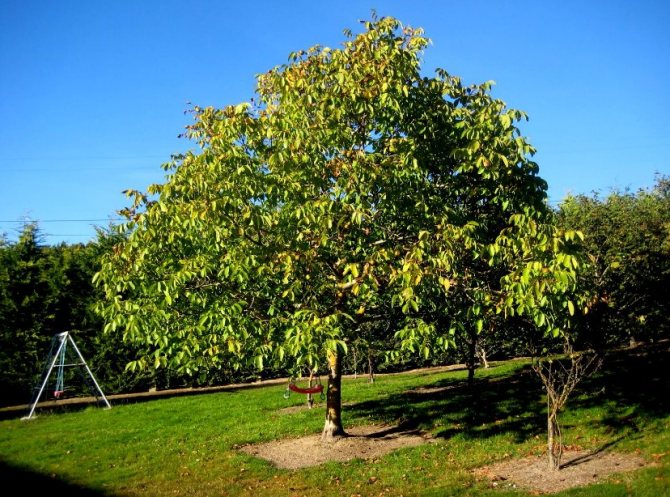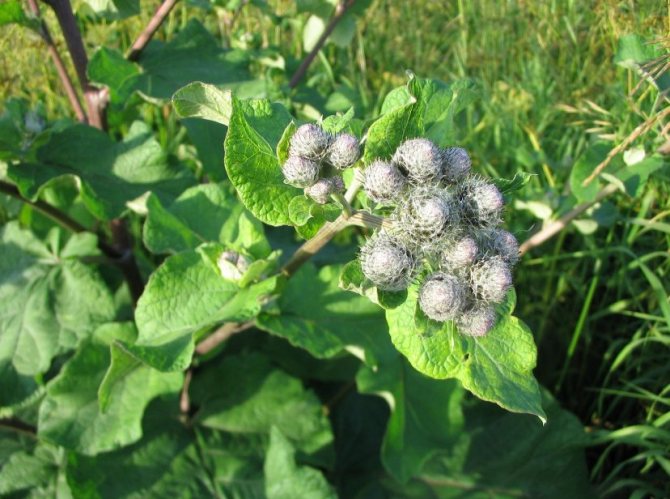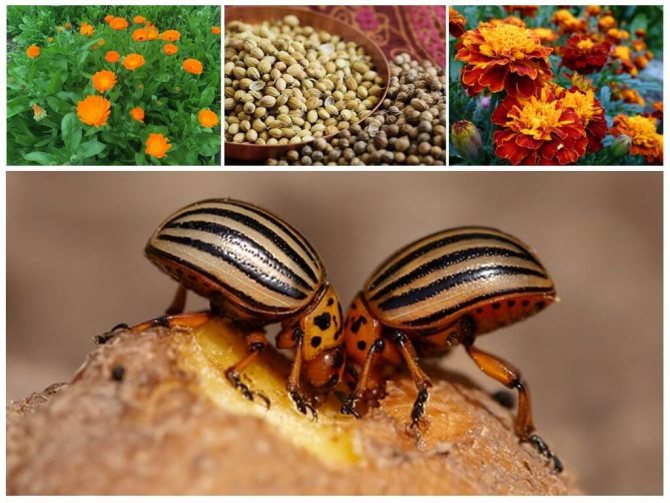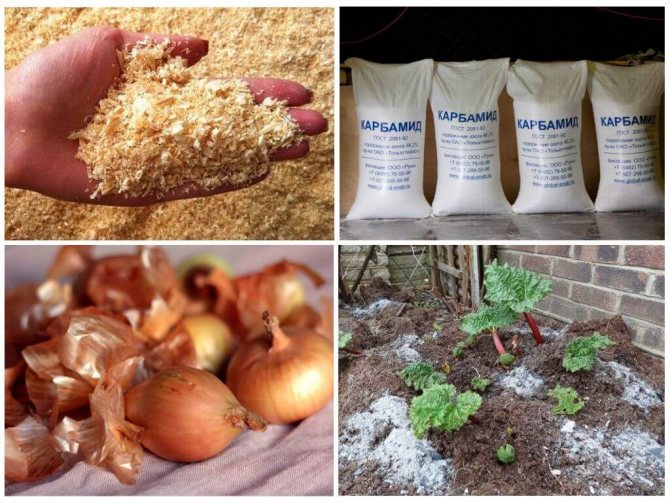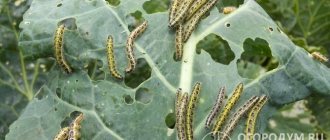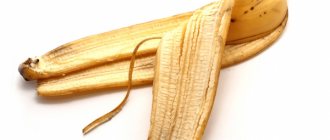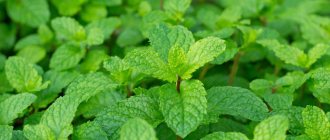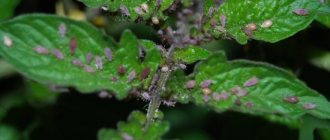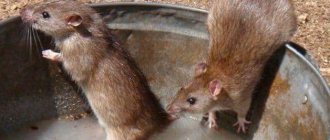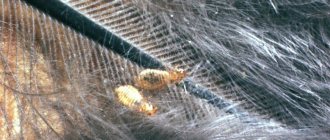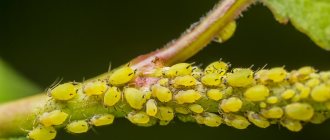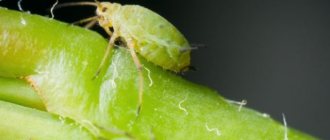Every amateur vegetable grower is especially concerned about the problem of protecting potatoes, eggplants, tomatoes, peppers and other only nightshade crops from such an unrealistically widespread pest as the Colorado potato beetle, which, whatever one may say, is the champion among the most terrible insects in our summer cottages. However, do not give up, as there is a solution to this problem. A combination of proven folk and chemical remedies proposed in our article will help to adequately correct the situation and in the end to cope with this misfortune.
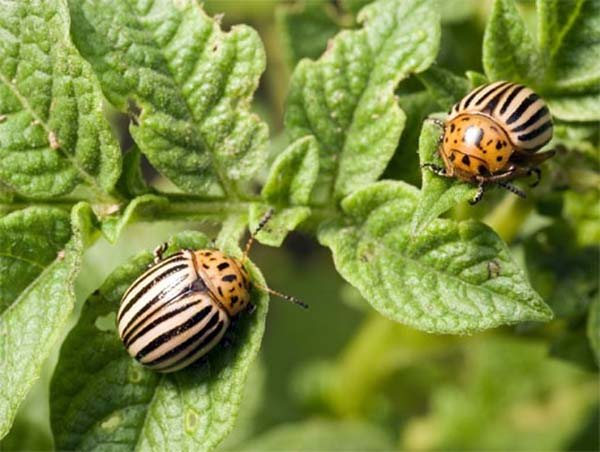
Colorado potato beetle - description
The Colorado potato beetle is an insect with an oval, convex, shiny yellow-orange body 8-12 mm long, up to 7 mm wide with five black stripes on each elytron. On the dorsum of the beetle there are black spots, the membranous wings are well developed - the beetles are able to make long flights.
The Colorado potato beetle larva, 15-16 cm long, has a black head and two rows of black spots on the sides. At first, the body color of the larva is dark brown, but over time it becomes bright yellow or pinkish - when eating the leaves, the larvae are able to digest all pigments, except for carotene, which, accumulating in the tissues, stains the bodies of the larvae in a carrot color.
- Spider mite / Tetranychus
Colorado beetles overwinter in the soil at a depth of 20 to 50 cm, and in spring they climb to the surface, feed on seedlings, mate and lay eggs on the underside of the leaf plates. One female can lay from 5 to 80 eggs per day, and from 300 to 1000 eggs per season. The larvae of the first instar feed on the pulp of the leaves from the underside, the larvae of the second instar destroy the entire plate, leaving only the median veins, and the larvae of the third and fourth instars spread out, often moving to other plants.
After 2-3 weeks, they burrow into the soil to a depth of 10 cm and pupate, and after 10-20 days they turn into an adult and get out to the surface or, if late autumn has already begun, they enter diapause until spring.
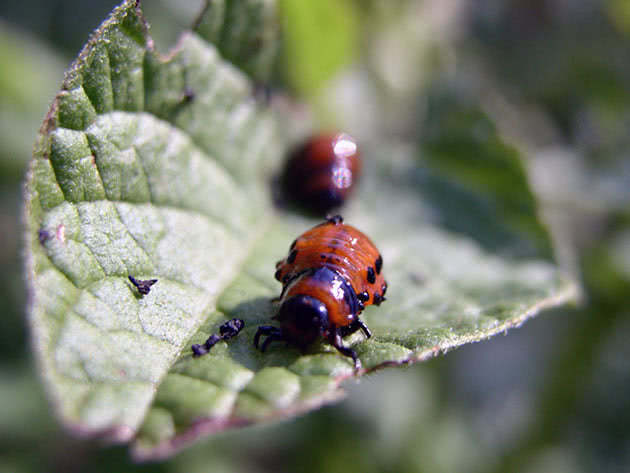

The life span of Colorado beetles is one year, but some individuals can live for two or even three years. If the beetles are in danger, they do not fly away, but fall to the ground, pretending to be dead.
Features and Description
First of all, let's talk about what this insect is, when it was first discovered and in what ways it managed to spread throughout the globe. The insect was first discovered by the American naturalist Thomas Sayman back in 1824. The beetle received a similar nickname due to the fact that it devastated fields with potato plants in Colorado, but the beetle is native to Mexico, where its subspecies also live, massively absorbing the leaves of tobacco and nightshade plants.
In Europe, the insect spread during the First World War. The first country on our continent was France. The Colorado potato beetle swiftly moved eastward, already in 1940, reaching the vastness of the Soviet Union. In 1949, the "enemy" was first spotted in Lviv Oblast, Ukraine.
The Colorado potato beetle is an insect belonging to the leaf beetle family.This pest parasitizes not only on potato crops, but also on all nightshade plants: sweet pepper, henbane, tomatoes, physalis and eggplants.
Stages of development
As for the fertility of beetles, the female Colorado potato beetle is capable of laying up to 500 - 700 eggs throughout her life, which will be located on the back of the plant leaf in 30 - 40 pieces. The larvae hatch two weeks later. The entire breeding cycle reaches 25 days.
In order to make it easier to assess at what stage of development the larva is, biologists have systematized all the data and identified four main ages. In the first and second instar ranges, the larvae are extremely small and practically immobile. They tend to stick together and feed on the substrate the eggs were on. In these two stages, the parasites do not significantly harm the plants and can be easily harvested by hand.
After molting, reaching the third and fourth stages of development, the larvae begin to actively disperse to other plants. By themselves, the larvae begin to reach large sizes, similar to those of adults, but their color remains red or crimson.
When the larvae reach 20–25 days, they submerge in the soil to pupate. The depth to which the larvae submerge usually does not exceed 10 cm.
Now let's find out how much green potatoes the parasite can eat. For many agronomists, it will be a discovery that beetles feed not only during the day, but also at night. In the dark, the beetle parasitizes much more foliage and stem. Within one month, each insect absorbs about 4–5 g of foliage or shoots, the larva - no more than 2 g.
It may seem to someone that the damage from destroying foliage is insignificant, but this is not so. Due to the fact that a large number of chemical and physical processes take place in the leaves of the potato, which, under the influence of the parasite, can slow down, stop or stop altogether.
According to statistics, 10 Colorado potato beetle larvae can reduce the yield by 10-15%, and 40-50 larvae are completely capable of destroying an entire potato bush, reducing the amount of harvest by 100%. At the end of the harvest, the insects go deep into the soil to a depth of about 60 - 70 cm and hibernate there.
The secret to the resilience and endurance of the Colorado potato beetles is that they are able to stay in the soil for several years. At the same time, there is always a reserve at a depth in case the individuals that got out into the world die. In addition, leaf beetles do not drown in water, they are quite easily carried by gusts of wind, and the presence of wings allows them to fly from bush to bush, developing an average speed of 5-7 km / h.
How to get rid of the Colorado potato beetle
Fighting the Colorado potato beetle
The fight against the Colorado potato beetle includes agrotechnical, mechanical, biological and chemical methods. Using techniques that improve the growth and development of nightshade plants, it is possible to increase the resistance of crops to damage and thereby complicate the living conditions of pests and reduce their number. It follows from the fact that the Colorado potato beetle primarily damages weak plants, therefore, it is necessary to apply such agrotechnical methods that contribute to the strengthening of plant health:
- choose varieties of nightshade that are poorly eaten by a beetle for cultivation;
- plant only high-quality and healthy potato tubers;
- carry out timely and competent planting care.
Mechanically, beetles are destroyed when there are few of them: as soon as seedlings appear or seedlings take root, it is necessary to carefully examine not only the plants, but also the soil around them in order to detect pests in time and collect them in a jar with saturated saline or kerosene.
The safest for your garden and the most promising is a biological way to control the Colorado potato beetle. It is based on the use of its natural enemies to the detriment of an insect - birds, microorganisms, predatory and parasitic insects.
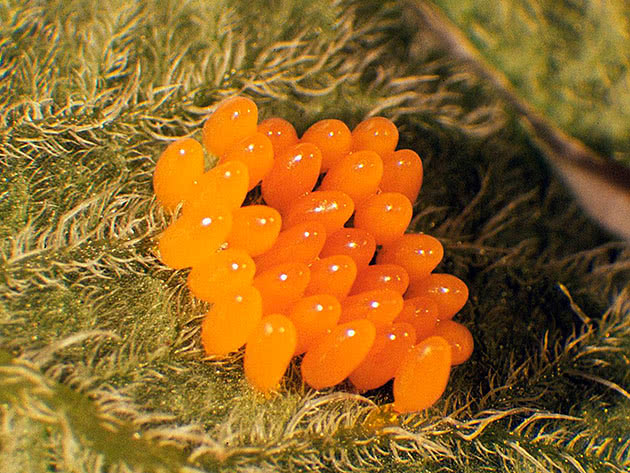

The chemical method involves the treatment of plants with insecticides during the second instar of the larvae and during the mass appearance of young beetles. But you should know that the Colorado potato beetle has a high resistance to pesticides and quickly adapts to them. Systemic insecticides are non-addictive and have been shown to be highly effective against the pest for many years.
Colorado potato beetle remedies
The best chemicals against the Colorado potato beetle are:
- Actellik (fifty percent emulsion concentrate) is a broad-spectrum insecticide that can be used no more than twice a season, diluting 15 g of the drug in 10 liters of water. Solution consumption - 1 liter per 10 m² of a plot with nightshade crops;
- Arrivo (twenty-five percent emulsion concentrate) is an insecticide with an even wider spectrum of action than Actellic, which is also used no more than twice per growing season, dissolving one and a half grams of the drug in 10 liters of water. Consumption - 1 liter per 10 m²;
- Decis (twenty-five percent emulsion concentrate) is an insecticide of contact action, showing high efficiency under favorable conditions at a low consumption rate. It is not washed off by rain, disintegrates in the soil, does not accumulate, interacts with other drugs. Decis, like Arrivo and Actellic, can only be used twice per season. The method of preparation of the solution and consumption per m² is the same as for the named preparations;
- Itra-VIR (tablets) - one tablet of the drug is dissolved in a bucket of water and consumed for spraying 1 liter of the composition per 10m² of area with nightshade crops. Processing from the Colorado potato beetle Inta-VIR is carried out no more than two times per season;
- Karate, Kinmix (5% emulsion concentrates) - English insecticides. To prepare a solution in 10 liters of water, add 1 g of Karate or 2 g of Kinmix. These insecticides can be applied no more than twice during the growing season;
- Sonnet (ten percent emulsion concentrate) is an American contact insecticide that can be used to treat Colorado potato beetle nightshade only once - during the period of mass appearance of larvae. In 10 liters of water, dilute 2 g of the drug, consuming 1 liter of the composition per 10 m² of plantings;
- Sumi-Alpha (5% emulsion concentrate) is a Japanese insecticide applied no more than twice a season in the form of a solution of 1.5 g of the drug in 10 liters of water. The last processing is carried out no later than 30 days before harvest. Consumption - 1 liter per 10 m²;
- Sumicidin (twenty percent emulsion concentrate) is another Japanese drug that can be used only twice during the growing season in the form of a solution of 3 g of insecticide in 10 liters of water. The solution consumption is the same as for other drugs;
- Cymbush (twenty-five percent emulsion concentrate) is an English broad-spectrum drug used no more than twice a season. For the working solution, add 1 g of the drug to a bucket of water. The expense is the same;
- Sherpa (twenty-five percent emulsion concentrate) is a French drug with a consumption rate and recipe like that of Tsimbush;
- Prestige (suspension concentrate) is an insect-fungicidal dressing agent for potato tubers. Prestige is used for the treatment of already germinated nightshades - 100 ml of the drug is diluted in 10 liters of water;
- Regent from the Colorado potato beetle is a universal insecticide in 1 ml ampoules. To prepare the solution in a bucket of water, dilute one ampoule of the drug.
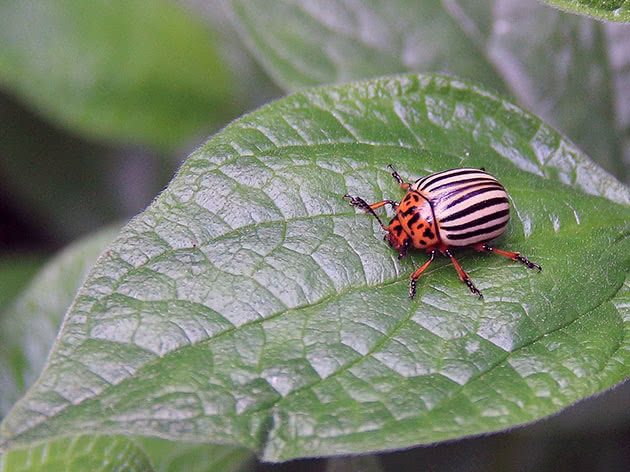

Neighborhood with repellent plants
The use of chemistry requires great care, it can have negative consequences for the garden and the person. Folk methods are based on plant ingredients that do not accumulate in vegetables, are safe for children, animals
Contain different methods
In potato leaf beetles, the sense of smell is highly developed. They find solanaceous plants by their specific smell. To scare away, mask the nightshade "spirit", strong-smelling plants are planted next to the beds.
Potatoes, peppers, tomatoes and other vegetables are planted interspersed with aromatic crops. This excludes the appearance of leaf beetles, helps to reduce the number of beetles by 8-9 times. For these purposes, work well:
- basil;
- borage;
- coriander;
- fragrant tobacco;
- calendula;
- garlic;
- Melissa;
- beans;
- dill;
- mint;
- onion.
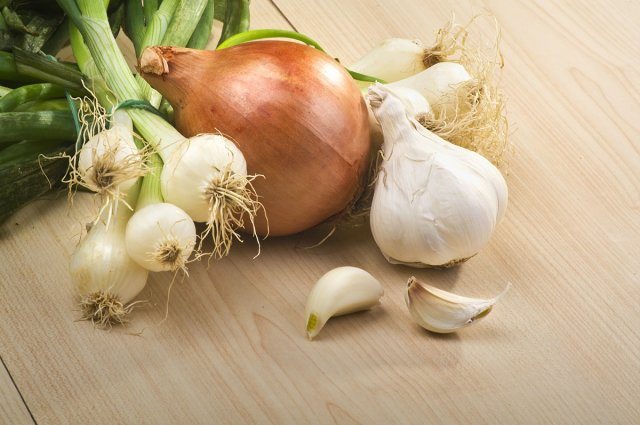

Onions and garlic are a popular home remedy for Colorado potato bushes. Photo: 3.
Fighting the Colorado potato beetle folk remedies
As you can see, there are plenty of chemicals against the Colorado potato beetle, but as a result of their treatment of nightshade crops, poisons sooner or later enter our stomach. How to deal with the Colorado potato beetle and not endanger your health? Mechanical collection of beetles is an effective and safe means, but owners of large plantations cannot cope with pests in this way. In such cases, they resort to not so radical, but non-toxic for humans, treatment of sites with folk remedies. We offer you recipes for several of the most effective formulations from leaf gnawing:
- 1 kg of fresh leaves and green fruits of a walnut pour 10 liters of boiling water, leave for a week under a lid, then strain;
- 300 g of dried leaves and walnut shells pour 10 liters of boiling water, insist under the lid for a week and strain;
- Insist 1 kg of dry crushed white acacia bark in 10 liters of water for three days, then strain;
- Pour half a bucket of poplar leaves with water, boil for 15 minutes, bring the volume to 10 liters, leave for 3 days and drain;
- Dissolve 100 g of birch tar in a bucket of water and carry out three treatments of nightshades with this solution within a week;
- half a kilogram of sunflower flowers to insist for three days in a bucket of water, strain;
- Pour 1.5 kg of celandine with hot water and leave under the lid for 3 hours, then strain and pour in a 1.5% solution of calcium chloride;
- Pour a full bucket of chopped fresh or dry celandine with hot water and simmer for 15 minutes. Drain the resulting broth and use to prepare an aqueous solution in a ratio of 1:20 (or half a liter of infusion per 10 liters of water);
- Pour 100 g of chopped dry roots of elecampane with boiling water and leave for two hours. For the first time, plants are treated with such a remedy when they reach a height of 15 cm. In total, it is desirable to carry out 3 treatments with an interval of 10 days;
- Pour 300 g of onion husks with 10 liters of water at a temperature of 70-80 ºC and insist under load for 24 hours, then strain;
- Boil 200 g of horsetail and 200 g of dandelion herb in 10 liters of water for 15 minutes, allow to cool, strain and immediately use for processing plants;
- Mix 300 g of chopped wormwood with a glass of wood ash, pour boiling water over, leave for three hours, then strain;
- Boil 100 g of dry hot pepper for 2 hours in 10 liters of water, allow to cool, strain, add 40 g of grated soap, dissolve, stirring, and process the plants;
- a kilogram of chopped tomato stepsons and leaves, insist for 4-5 hours in 10 liters of warm water, then strain, add 40 g of soap and stir until completely dissolved;
- Boil 3 kg of chopped tomato tops for half an hour in 10 liters of water. Strain the broth and dilute it with water in a ratio of 1: 5 before processing, adding 40 g of soap to every 10 liters of solution;
- insist half a kilogram of dry tobacco roots in 10 liters of water for two days, then dilute with water in a ratio of 1: 2 and add 40 g of soap;
- insist half a kilogram of tobacco dust or crushed tobacco stalks in 10 liters of water for two days, then dilute with water in a ratio of 1: 2 and add 40 g of soap;
- Insist 200 g of chopped arrows and heads of garlic in 10 liters of water, then strain and add 40 g of soap.
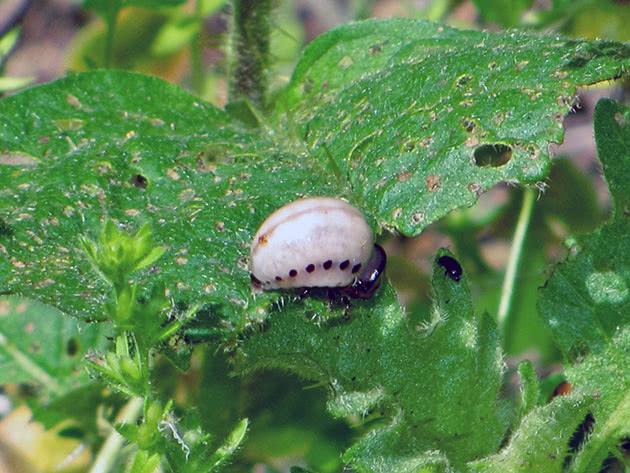

In addition to treating the plant with aqueous solutions, "dry" methods are also used in the fight against the Colorado potato beetle. For example:
- nightshade crops are powdered with sifted ash, and birch ash is the best in this regard. Processing is carried out before flowering once every two weeks, and after flowering - once a month. They do this after rain or in the morning, when the leaves have not yet dried from the dew. Approximate consumption - 10 kg of ash per one hundred square meters;
- a good result is given by dusting plants with corn flour on wet leaves;
- you can cause the guaranteed death of the Colorado potato beetle larvae by dusting the plants with gypsum or cement;
- The smell of fresh pine or birch sawdust scattered between the bushes of nightshade scares off the beetle. Before flowering, they are scattered once every two weeks, and after flowering - once a month.
How to get rid of the Colorado potato beetle on nightshades
Colorado potato beetle
In early spring, as soon as the soil warms up, on a cloudy day, scraps of potatoes are scattered over the site, which had previously been in a chloroform solution for 24 hours. After a few days, the beetles that have accumulated on the potato pieces and the dead beetles are collected. Thus, by the time you need to plant potatoes, you will have already freed the area from a number of beetles. You need to repeat this procedure a week before germination and in the fall, when the potato crop is harvested, but the beetles have not yet left for the winter.
The Colorado potato beetle does not tolerate the smell of rotting onion husks, therefore, when planting potatoes, it is placed in each hole along with a handful of ash - the beetle will not appear on such bushes until the end of flowering, and after flowering it will no longer be able to do much harm to potatoes.
A good way to protect potatoes from the Colorado potato beetle is to mulch the row spacing with straw, which not only suppresses weeds, but also allows you to retain moisture in the soil longer, protects potato tubers from the sun and creates a fertile environment for some species of spiders and insects that also eat the Colorado beetle - ground beetles , ladybirds and praying mantises.
- Cyclamen mite / Phytonemus pallidus
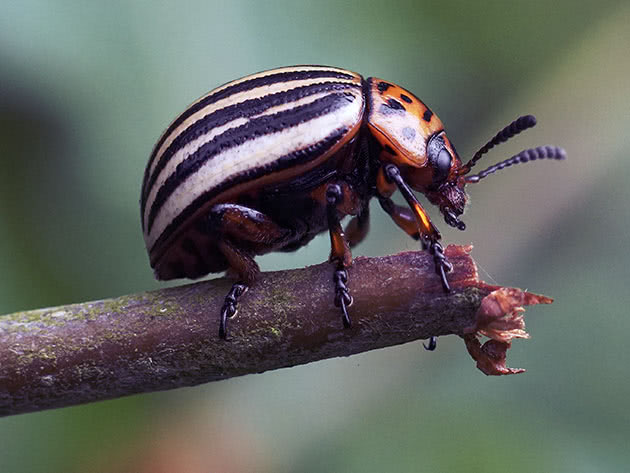

An effective defense against the Colorado potato beetle are some plants that are recommended to be planted between the rows of potatoes and around the perimeter of the plot - sage, tansy, catnip, marigolds, calendula, hemp, coriander, nasturtium and matthiola. The Colorado potato beetle will not fly into such a site and will not crawl. However, these plants should not be allowed to drop their seeds to the ground, so you need to mow or cut the flowers as soon as they open.
As for chemical control agents, we have described the best drugs for this. Recently, a new French remedy called "Colorado Potato Beetle NO" has gained popularity, which is safe for both people and animals. The preparation contains Indian azadirachta oil. To protect the site, three treatments are required per season: the first time with an aqueous solution of the drug in a ratio of 1:40, the wells are treated when planting tubers, the second time the potatoes are sprayed during the period of mass emergence of seedlings, and the third treatment is carried out two weeks after the second.
As for the drug Prestige from the Colorado potato beetle, the use of this insecticide for dressing the tubers before planting does not save the potatoes from the second wave of the Colorado potato beetle. This means that you will have to use a different preparation for processing the tops.
Processing potatoes before planting - how and what
The often recommended drug Bankcol copes well with the destruction of the beetle, but suppresses the reproductive function of potatoes, and after treatment with this agent, you can remain without planting material for the next year.
Colorado potato beetle on eggplant
Traps are an effective way to combat the Colorado potato beetle: in early spring, as soon as the soil warms up, spread heaps of potato peelings or potato pieces in different places in the area, and as soon as pests accumulate in them, pour over them with gasoline and set them on fire. In order not to have to burn the beetles, you can moisten the cleaning with chlorophos, but if you have already used it more than once before, it will not have any effect.


When ovaries appear on eggplant seedlings, it is impossible to use pesticides to combat the beetle, so it remains to hide the bushes from the pest. To do this, you will need plastic bottles from drinks - they cut off the bottom and throat, and then put them on the plants, like covers. At this time, the beetles are lazy, do not want to fly, but crawl to the leaves along the stem, to which, if it is protected by plastic, it will be impossible to get close.
You can try another method: fence off the eggplant bed with a 50 cm high plastic wrap fence, and since the female Colorado potato beetle almost never fly, and the males do not fly where there are no females, your bed will be protected for some time.
Growing eggplants - planting and caring for the garden
A mosquito net saves eggplants from beetles, from which, with the help of a stapler, caps are made for each bush - the net allows light, air and moisture to pass through, but not beetles. The bottom edge of the cap is sprinkled with earth.
Another way to scare off the Colorado potato beetle from eggplants is to fill up the area with mowed herbs almost to the height of the bushes. The unusual smell will scare the bugs away from the eggplant.
Plant between the rows of eggplants and around the perimeter of the garden with plants that scare off the Colorado potato beetle with their smell.
If, nevertheless, Colorado beetles appeared on eggplants, use folk remedies to destroy them or collect beetles with your hands - chemicals are too toxic.
Colorado potato beetle on pepper
The Colorado potato beetle does not appear on sweet pepper bushes as often as on potatoes, but do not underestimate the danger of its appearance: under favorable conditions for the pest, it can destroy the entire crop. In early spring, place potato topper traps or potato wedges around the area and kill any insects that gather in them. Inspect the emerging seedlings daily and, if you find beetles, collect them in a jar with a concentrated saline solution - the mechanical method of removing beetles is the most laborious, but also the safest.
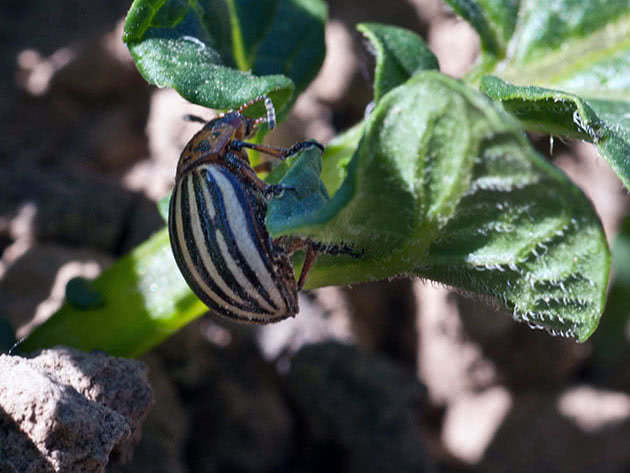

For processing pepper, use infusions and decoctions of wormwood, hot pepper, tomato tops, walnuts and other folk remedies to combat the Colorado potato beetle.
Planting and caring for peppers - growing in the garden
How to use chemicals
First of all, when treating potatoes from a pest, you must understand that any chemical preparation is poisonous and can have a detrimental effect not only on insects, but also on humans. Therefore, you should adhere not only to the instructions for use, but also to some other requirements:
- Young people under 18, pregnant or lactating women should not be allowed to work with chemicals. The use of drinks or food, as well as smoking during the processing of plants with chemistry, is strictly prohibited;
- It is not recommended to process with a broom, watering can or other means not intended for this;
- Plants should be processed in calm weather, preferably in the early morning or evening, using special sprayers for the garden and vegetable garden;
- After working with pesticides, you should take off your equipment, bleed air from the sprayer, rinse its outer parts with running water, remove your overalls and wash your hands and face well with soap. After, take a shower;
- Upon completion of the processing of plants, it is advisable not to carry out any work on the beds for a day or two. The plants weighed out after this should be destroyed, and in no case should they be fed to livestock and poultry;
- If there is an apiary at the dacha, then it must be taken out at a distance of 4-5 kilometers from this zone for 5-6 days, or the hives must be isolated from pesticides;
- Processing is carried out 20-30 days before harvesting, or strictly according to the instructions of the drug.
